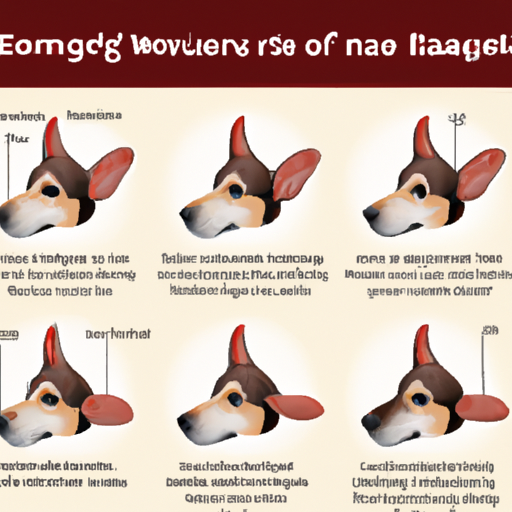As a caregiver, you understand the importance of recognizing non-verbal cues to provide the best care possible. When it comes to our furry friends, understanding their body language is crucial, especially when they can’t communicate their feelings verbally. One such important cue to understand is when a dog’s ears go back. But what does it mean?
H2 Understanding Canine Body Language
Canine body language is complex and multifaceted, much like human body language. Dogs communicate their emotions and intentions through a variety of signals, including tail wagging, body posture, eye contact, and ear positioning. When your dog’s ears go back, it may indicate a variety of emotions, from fear and submission to attention and friendliness. Understanding these signals can strengthen your bond with your four-legged friend and allow you to respond appropriately to their needs.
H2 Decoding Dog Ear Positions
In order to understand what it means when your dog’s ears go back, let’s look at different ear positions and their typical meanings:
- Ears erect and forward: Your dog is alert, interested, or agitated.
- Ears relaxed and neutral: Your dog is calm and content.
- Ears pinned back: This could indicate fear, submission, or sometimes friendliness.
Additionally, it’s important to consider the context. For example, if your dog’s ears are back and they are wagging their tail, it could mean they are happy to see you. On the other hand, if their ears are back and they are growling, it could indicate fear or aggression.
H2 The Role of Breed Specifics and Individual Differences
Just like humans, dogs also have individual differences, and the ear position can vary between breeds. For example, breeds with naturally floppy ears like Beagles and Basset Hounds may not move their ears back as noticeably as breeds with erect ears like German Shepherds or Siberian Huskies. Therefore, it’s crucial to understand your dog’s normal ear position to accurately interpret any changes.
| Breed | Normal Ear Position |
|---|---|
| Beagle | Floppy |
| Basset Hound | Floppy |
| German Shepherd | Erect |
| Siberian Husky | Erect |
H2 What To Do When Your Dog’s Ears Go Back
If your dog’s ears consistently go back and it’s accompanied by other signs of stress or discomfort (like tucked tail, lowered body, or whimpering), it’s recommended to consult a professional, like a veterinarian or a dog behaviorist. They can help determine if there’s a physical issue causing discomfort or if your dog is responding to a stressful environment.
H2 Frequently Asked Questions (FAQs)
-
Can my dog’s ear position indicate health issues?
Yes, sudden changes in your dog’s ear position, especially if accompanied by other symptoms like scratching, could indicate a health issue. -
My dog’s ears go back when they see a particular person or animal. What does that mean?
This could mean your dog feels uncomfortable or threatened. Monitor their behavior and consult a professional if needed. -
Is it normal for a dog’s ears to go back when they’re excited?
Yes, some dogs will pull their ears back when they’re excited or happy. -
Does ear position vary between dog breeds?
Yes, different breeds have different ear shapes and positions, which can affect how their ear movements are interpreted. -
Should I be worried if my dog’s ears are always back?
Not necessarily. But if it’s accompanied by other signs of stress or discomfort, it’s a good idea to consult with a professional.
By understanding what it means when a dog’s ears go back, you can better interpret your furry friend’s feelings and provide them with the best care possible.



